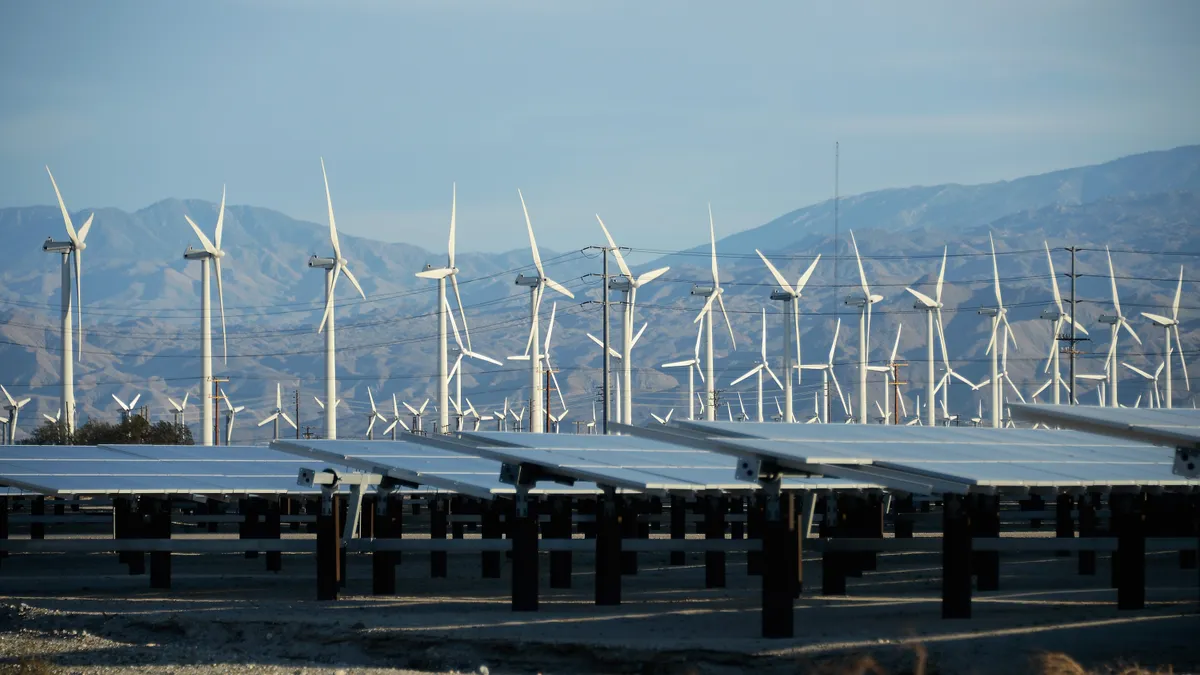Dive Brief:
- Corporate renewable energy procurements are helping to drive global decarbonization, and matching hourly energy demand with carbon-free power sources can accelerate the transition — but companies must align procurement strategies to grid dynamics, according to new analysis by RMI.
- In 2019, corporate procurements accounted for 10% of the global renewables market and almost a quarter in the United States, according to the "Clean Power by the Hour" study. To the extent wholesale markets expand options for corporate buyers, that share could grow, said RMI Principal Mark Dyson, an author of the study.
- "Our recommendation is to really look at the grid around you," Dyson said. "Don't just look at what your facility needs, look at what the system needs."
Dive Insight:
As corporations procure more renewables and energy storage directly and increasingly seek to match all of their energy demand with carbon-free power, RMI's paper highlights the need for a holistic approach in order to best utilize the resources being added.
"Hourly load-matching strategies can help lay the groundwork for a decarbonized grid in the long term but should be carefully tailored to region-specific grid dynamics to also maximize emissions reductions in the near term," the report concluded.
To ultimately decarbonize the grid, the report notes annual corporate renewable procurement targets will not be enough — but hourly matching comes with higher costs.
"As the level of hourly matching is increased, costs for hourly load matching rise in three distinct stages, well above costs for meeting annual procurement targets," RMI found. The cost to match anywhere from 30% to 80% of a facility's hourly demand with wind and solar are "relatively stable but increase significantly at higher levels of hourly load matching due to the need to use storage."
Buyers targeting "higher levels" of hourly matching — greater than 85% — "will face high costs in most markets if they rely only on only wind, solar, and lithium-ion batteries," RMI said. However, 100% matching also means buyers "create a demand signal for emerging technologies that can also meet valuable system-wide needs in decarbonized grids."
Microsoft and Google are among a few large companies that have piloted hourly load-matching strategies. Google set a goal of achieving round-the-clock carbon-free power supply in 2018 and in September unveiled a plan to get there by 2030. In 2019, Microsoft announced a plan to power facilities from renewables 24/7, working with ENGIE to reach its goal.
RMI's report, produced with support from Microsoft, examined the costs, emissions impacts and renewables integration implications of hourly matching strategies in seven electricity markets, including four in the United States: PJM Interconnection, California Independent System Operator, Southwest Power Pool and Duke Energy's territory in the Southeast.
"Hourly procurement works best and can be most beneficial for the grid overall if it is done within the context of an organized electricity market," Dyson said. Corporate procurements and 24x7 matching could grow, "to the extent that wholesale markets with direct access are expanded and reformed." Maintaining the traditionally regulated, vertically-integrated monopoly utility structure in some regions could slow the growth of 24x7 corporate procurements, he said.
RMI's research recommends expanding wholesale market access to scale up hourly-procurement benefits, and ensuring procurements work for the entire grid.
"With more advanced procurement strategies, corporate procurement can play a key role in decarbonization of the grid as a whole," RMI said. "Coordinated action" around hourly-matching strategies "presents a rare opportunity to speed progress to a clean grid."
“There is a tremendous amount that leading energy buyers can do to drive both near-term and long-term grid decarbonization, especially if they tailor their actions to needs of the grid as a whole,” RMI Principal and co-author of the report Charles Teplin said in a statement.
CORRECTION: A previous version of this article misstated Google's clean energy goals. The company wants to source round-the-clock carbon-free energy by 2030.















